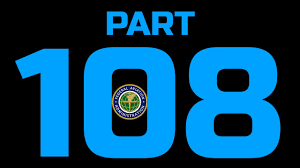The Federal Aviation Administration (FAA) is set to introduce Part 108, a groundbreaking regulation that will standardize Beyond Visual Line of Sight (BVLOS) drone operations. This rule is expected to transform commercial drone usage, particularly in regions like the Caribbean, where UAVs are increasingly vital for agriculture, disaster response, and infrastructure monitoring.
The Caribbean, with its diverse landscapes and dispersed communities, stands to benefit significantly from Part 108. Key areas of impact include:
What is FAA Part 108? Part 108 aims to remove the need for individual BVLOS waivers, allowing drones to operate beyond the pilot’s direct line of sight under specific conditions. This shift will enable long-range inspections, autonomous deliveries, and enhanced emergency response capabilities.
- Disaster Relief: Hurricanes and floods frequently disrupt infrastructure. BVLOS drones can provide real-time damage assessments and assist in delivering supplies to remote areas.
- Agriculture: Large-scale farms can leverage BVLOS drones for crop monitoring, pest control, and precision spraying, improving efficiency and sustainability.
- Infrastructure & Security: Governments and private entities can use drones for coastal surveillance, pipeline inspections, and border security, reducing costs and improving safety.
Challenges & Considerations
While Part 108 promises expanded UAV operations, Caribbean nations must address regulatory alignment with local aviation authorities. Training programs and investment in detect-and-avoid technology will be crucial for safe implementation.
As the FAA finalizes Part 108, Caribbean stakeholders should prepare for new opportunities in UAV operations, ensuring compliance while maximizing the benefits of BVLOS technology.


